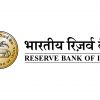By Manish Odeka, Chief Risk Officer, Hiranandani Financial Services

Micro, Small, and Medium Enterprises (MSMEs) play a crucial role in the Indian economy, contributing significantly to employment generation and economic growth. Access to timely and adequate credit is essential for them to sustain and expand their operations. NBFCs like HFS have emerged as crucial players in MSME lending, offering innovative solutions and catering to the unique needs of these enterprises. Post-pandemic, several advancements in technology and data analytics have transformed the credit underwriting process for MSME lending, paving the way for a promising future for both MSMEs & lenders.
I firmly believe that to deliver credit to the vast untapped MSME market, a lender would need a fine runway build upon 2 catalysts – Treasury & Technology – to reach the untapped deeper markets. To serve a heterogeneous market like India, a lender would need capabilities on these 2 Ts to deliver the 4Cs of credit, by being first in queue to select the good credit quality. If the 4Cs are the payload to be delivered, the 2Ts bring the speed & vehicle to deliver this payload timely with better customer experience and delight.
This transformation in retail lending would be led by efficient management of treasury lines, technological advancements, data-driven approaches and alternate credit scoring models. With the right use of technology and data analytics, NBFCs can make their underwriting processes proactive, biased towards good credit, making them agile, quick n accurate, and inclusive to all.
Towards Data-Driven Underwriting
This shift towards data-driven underwriting by leveraging data analytics, use of AI and risk scorecards to assess creditworthiness (basis surrogates – formal statements, cash flows, GST returns, payment behavior, vendor relationship, volume & velocity, industry trends) would enhance risk assessment & management, resulting in improved decision-making and reduced default rates.
Not to be forgotten the core of credit platform is the most important and critical piece – the 5th C – is Common Sense. All other 4Cs can be handled by tools and technology but the mindset and decision management system have to be pragmatic and common sensical. Technological advancements are enablers, but the core of lending is capital conservation which is application of wisdom and common sense. The lender need not be swayed away with new-age credit toys; rather pick-n-choose the right tool for your product. Don’t just be a victim of FOMO about a tool which any peer is using; it doesn’t always fit all.
Alternative Scoring & Mitigation Tools
It is now a basic need to have technology-driven risk mitigation tools such as cash flow forecasting models, scenario analysis and stress testing protocols to assess the potential impact of adverse events on the repayment capacity of MSME borrowers and be future-ready. Invest early in an agile & robust credit monitoring tools & collection system, including automated reminders, digital payment gateways along-with personalized follow-ups that give early warning indicators to proactively manage the portfolio.
Open Banking & Integration
Open Banking network and Integration with Digital Platforms with a better UI/UX is now taken for granted. Instead of building all capabilities in-house, MSME lenders now have the choice to partner with relevant agencies / digital players by leveraging APIs to access cloud information and assess a prospect with less friction on data collection. In addition to JAM trinity, OCEN, ONDC, AA network, GSTIN, UPI 2.0 are all enabling agents in providing a seamless and user-friendly experience for MSMEs by simplifying the loan application & appraisal process.
Leveraging Treasury
Each NBFC has varied options basis regulatory guidelines and their nature of operations. The pro-active management of multiple and diversified sources of treasury lines – whether it be equity infusion, debts like term loans / cash credits / bonds / debentures / ECBs / CPs / securitizations / co-lending partnership, all this will encourage capability building and risk appetite to do more business. Every bps saved in treasury cost need to be utilised to attract good credit customers and in turn manage better risk costs. It enables NBFCs to make informed strategic decisions.
By having a clear picture of their cash position, funding sources, and risk exposures, NBFCs can develop effective business strategies, plan for future growth, and make investment decisions based on a thorough understanding of their financial resources.
Conclusion
The future of retail credit underwriting, particularly for micro & mini enterprises is poised for significant greater advancements in near coming days. There is immense potential for NBFCs to leverage upon treasury & technology to deliver efficient credit underwriting and in turn empowering micro & small-sized businesses to access the funds they need to thrive, in turn enabling financial inclusion and fostering economic growth.
Read more:








